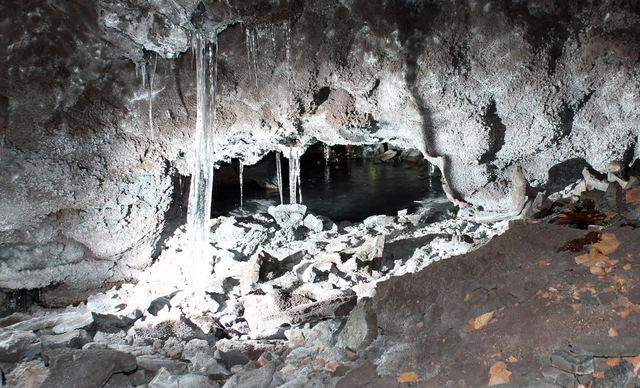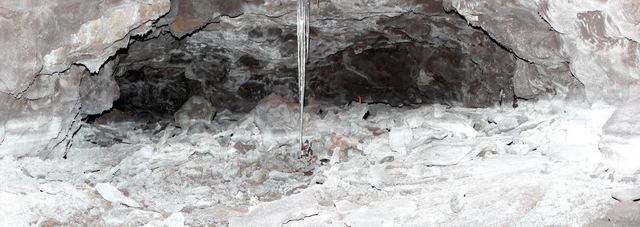HILO — Ice caves on Mauna Loa are feeling the heat, and not from the massive volcano’s magma chamber. ADVERTISING HILO — Ice caves on Mauna Loa are feeling the heat, and not from the massive volcano’s magma chamber. Scientists
HILO — Ice caves on Mauna Loa are feeling the heat, and not from the massive volcano’s magma chamber.
Scientists say they are noticing a decline in the ice supply in lava tubes high up on the 13,678-foot-tall mountain’s north flank, with climate change likely a factor.
There are two lava tubes known to have ice year-round in Hawaii, both on Mauna Loa, and a recently published study documented the changes in one first surveyed in 1978.
The report warns that additional ice loss could occur rapidly.
“The warming trend is unavoidable, so to speak,” said Norbert Schorghofer, a University of Hawaii planetary scientist and one of the report’s authors.
“In a decade from now, I think there is going to be something left; I don’t know how much.”
He said perennial ice still largely blocks one end of the lava tube, simply called the Mauna Loa Icecave, but a large ice floor has disappeared, leaving behind mineral deposits. The cave sits above the 11,800-foot elevation.
In 1978, that ice sheet, known as the “Skating Rink,” was about 1.5 feet thick and covered about 2,800 square feet. Sporadic spots of ice a few centimeters thick are now found instead.
The researchers found air temperatures in the cave to average about 32.3 degrees from November 2011 to November 2013. Temperatures dropped below freezing 37 percent of the time.
In addition to temperature, ice levels in the caves also are influenced by precipitation and airflow, Schorghofer said, adding a recent drought on the island could have played a role in the sheet’s demise.
The lava tube is between 750 and 1,500 years old, which means that some of the ice could have formed centuries ago and hold clues to past environmental conditions.
For his research, Schorghofer said he is studying samples of microbial life in the ice cave, which could shed light on the development of microorganisms on Mars, which also is known to have many lava tubes.
Ice melting also has been observed in the Arsia Cave on Mauna Loa, but since that tube was discovered in 2009, it’s not clear how much the supply might have changed over the same time frame, he said. There are no known ice caves on Mauna Kea, which has fewer lava tubes, Schorghofer said.
Stephen Smith of the Hawaii Speleological Survey also is listed as one of the report’s authors.
Email Tom Callis at tcallis@hawaiitribune-herald.com.




